I recently read an article from the National Geographic website about research into the intelligence of crows. I highly recommend you read it before reading this journal update.
Ok – so now that you’ve read it you know that crows are shockingly smart – smarter than some primate species which we humans are only a few genetic clicks away from. Anyone that didn’t have mucho respect for these beasts before better start cultivating some right away!
I must admit, the crows I see always seem to have a kind of knowing self-possession, like they are in on a joke that I cannot fathom. Perhaps it is just that they are scavengers who live by their wits. Perhaps it is because as scavengers crows have probably eaten a lot more humans than humans have crows.
Seeing as I am a bit of a Woden-lover I tend to also love crows. They’re beautiful as well as smart.
I particularly love Australian crows’ song – which is quite different to Northern Hemisphere crows’ song. Sounding like they’ve been abusing beer and cigarettes for decades, their ragged cries of “MAAAAAAAATE” seems infinitely more Australian than any Aussie yobbo could ever be.
I’ve also been told that crows actually evolved in Australia before spreading out over the world, though the source wasn’t too reputable so I cannot be sure if this is true or not.
Anyway, I have this love of crows, and they often pop up at meaningful moments – omens or portents if you like.
As Woden-inspired crow lover I have a particular love of Huginn and Muninn – Thought and Memory, Odin’s spies, who soar across the worlds to bring him the divine version of a breakfast news show (hopefully with less bias and oversimplification, though).
A few years ago I devised and regularly practiced a little magical ritual to deepen my connection to Thought and Memory. I haven’t performed it for a while but the National Geographic article reminded me of it and I felt it high time to update and share this little practice in a broader forum (it original appeared on the Rune Net email list some years ago).
Huginn & Muninn I
Much of what I have to say below comes from my own personal experience and/or extrapolation from what little mythological evidence there is on Thought and Memory. So don’t go around thinking that it is some kind of matter of fact.
The two ravens, Huginn and Muninn, Thought and Memory, seem to be related to conscious[H]/unconscious[M], ‘enlightenment'[H]/ psychological awareness-integration[M]. Thought is to surface awareness and active construction of reality; Memory is to depth awareness and active
integration of reality.
I began to ponder the character of these themes out of a broader sense that, just for a lark, you can divide mystical practice into two general goals or projects.
The first relates to what I call ‘being-capable’ – being able to surf the force of wyrd or causal patterns; being
conscious of oneself and the world; being able to act on that consciousness. It has an ‘active’ aspect, but is interlinked with ‘being-whole’ so that it also acquires a ‘receptive’ aspect. I tie Huginn to this aspect.
The second I refer to as ‘being-whole’, which relates to psychological integration with oneself and one’s world. It has a more receptive aspect in that it involves being open to oneself, one’s unconscious, and the world around (including other people).
However, this opening up enables much more conscious action and informs its shape with wisdom. As such it is never truly independent of ‘being-capable’. I tie Muninn to this aspect.
Odin says in the Grimnismal that he dreads that Huginn will fall in flight, but fears more for Muninn. In other words, as terrible as a loss of consciousness is, a loss of psychological health and balanced organic systems is much worse.
There are deeper secrets about memory here too, which Bil Linzie has explored in his wonderful free ebook Drinking At The Well of Mimir, which you can get from his website.
The two ravens are interdependent, and each contains a part of the other (there is some receptivity in Thought and some activity in Memory). Fire and Ice are similar in this respect – so too are the Aesir and Vanir. As such, these dichotomies are not definite, the lines blur.
The point is to focus on the general shape of the trend – insistence on rigidity in these things is likely to lead one astray.
I think some paths of ‘initiation’ (used in an extremely broad sense) are imbalanced towards the being-capable/conscious end of the spectrum.
I also think that some people, too afraid to face their demons and achieve a healthier relationship to themselves and the world, try to compensate by attaining an insane amount of ‘being-capable’.
But the imbalance never goes away, and ultimately they risk trapping themselves in what amounts to a mentality present in some Thursar – reactive, unconscious, anxious, and angry. This also might relate to the difference between Adler’s psychology of inferiority/superiority and Jung’s psychology of submission/transformation.
Huginn and Muninn II
There are three sections to this part of this update. The first is a list of crude dichotomies, either directly from or tied to the Northern Traditions. They are neither absolute nor unambiguous. They seem relevant to the theme of Huginn and Muninn, but there is a lot of meditation and research hidden here.
Then I have listed the ‘features’ of the two modes Thought and Memory. You will find that the bleed-over from one to the other is subtle but important. This is because they are interlinked into a perfect whole when all is as it should be.
Each can be understood on its own terms, but ultimately has meaning only in context of its place with the other.
Finally I include the very simple Huginn-Muninn working I mentioned in the introduction to this post. This working certainly made me more intuitive and I seemed to become a crow magnet for a while.
Indeed, in regard to the latter: during the first period that I was practicing this ritual regularly I used to have a friend who lived near my home who was quite psychically tuned in.
I would often drop by her place unannounced. She told me one day that she never felt intruded because flocks of crows would invariably descend on her front yard in advance of my arrival, regardless of the weather or time of day. I have lots of other similar stories to this, some more dramatic too.
Since I’ve slacked off on the ritual, however, crows don’t give me as much attention.
Crude Dichotomies.
The two columns below are organised in terms of affinities. For example, Fire, Aesir, and Being-Capable could arguably be placed in the same category (I re-emphasise that all this is arbitrary and of use only insofar as it helps us expand our potential for numinous
experience).
Please note also that I am not implying that the items grouped together under a particular column are the ‘same thing’ – they simply seem to echo certain parallels. I also believe each extreme contains its opposite, so the neat dividing lines that the table implies are to be taken with a grain of salt.
Fire Ice
Being-Capable Being-Whole
Aesir Vanir
Huginn Muninn
Masculinity (as a cultural stereotype) Femininity (as a cultural stereotype)
Proactive Receptive
Dynamic Paradigmatic
Aspects of Huginn and Muninn.
As with the crude dichotomies these characteristics are not absolutes.
Huginn: Thought.
* conscious or at least cognitive;
* logical/mathematical;
* structured. At the extreme, ‘a priori’ or formal (in the sense of formal logic or mathematics);
* tends towards analysis and particularity;
* Imposes order upon (or at least reshapes) the world – able to transmute the course of wyrd. As such, tends towards Being-Capable;
* Powerless, or at least open to disaster, without emotions as a ground (can act as the guardian of
Memory);
* when perverted, leads to repression, denial, psychological dysfunction, totalitarianism and paranoia. Also leads to entrenched patterns of destruction.
Muninn: Memory.
* unconscious or at least non-discursive(not in language);
* more related to art than to science;
* poetic and metaphorical;
* intuitive, potentially ‘chaotic’ and unclarified;
* tends towards synthesis and universality;
* Responsive to organic patterns, able to anticipate the course of wyrd; as such, tends towards being-whole;
* keyed to emotion – thought is helpless or risks disaster without thought.
* when weak or perverted, can lose self because of a lack of distance and perspective – confusing image
for substance;
* when weak or perverted, can lead to madness – especially if repressed or taken too literally.
Each of these themes deserves a lot more reflection and exploration, but I am sure you can do a much better job of that than I – so I won’t spoil your fun!
Huginn and Muninn Working.
This working is best done in the morning, prior to your having ‘begun the day’. This is just a matter of
expedience, since it seems to work until one’s day ends, so doing it before you go to bed may be a little pointless (but in the world of dreams? Who knows?)…
It involves two runes, Dagaz and Mannaz, with Ehwaz as a (according to some views) ‘marriage’ rune to bind them. You could of course devise your own runic combinations for the ritual; it isn’t exactly carved in stone.
Dagaz is (in my arbitrary but somewhat evidence-based opinion) the rune of synthesis, the ‘clearing of Being’, the moment where equilibrium is reached. It is the point where dichotomies are gathered together and raised into a new expression. As such, this rune is invoked to draw the forces of Huginn and Muninn into a comfortable harmony within the self.
Mannaz is (in my arbitrary but somewhat evidence-based opinion) the rune of the fully integrated self, a being that has equilibrium. It is connected to itself and the world (Being-Whole, Muninn), but is able to distance itself, get perspective, and transform the self and the world (Being-Capable, Huginn).
Now to the ritual itself:
1) Stand still, with legs together and arms flat to your sides (or up in the air like wings, or whatever takes your fancy. Maybe you might quiver, shake, hop or dance). Your direction of facing is purely a matter of personal preference, mine being north (all others are equal).
Relax your muscles. In particular, tense and relax your shoulders a few times. You might be moved to let your mind settle. For atmosphere-setting purposes you might like to put on The Raven Song which will feature on our forthcoming Ironwood album :Fire:Water:Ash:. Yes, that is a shameless plug. Get over it.
2) Imagine that perched on each shoulder is a raven. On your left shoulder stands Huginn; on your right, Muninn. Imagine that each raven radiates a quiet knowledge, as well as a sense of mirth which you aren’t quite sure that you are in on.
3) Sing/vibrate “Huginn”, feeling and visualising the raven’s energies flowing into your body, awakening within your body.
4) Sing/vibrate “Muninn”, feeling and visualising the raven’s energies flowing into your body, awakening within your body.
5) Holding this image, intone the following:
Huginn and Muninn
Thought and Memory
Fly with me!
Soar in tandem!
Help me be capable!
Help me be whole!
Help me become what I am!
You’ll probably want to customise this to your own liking. You might additionally consider memorising the stanza from Grimnismal that mentions Huginn and Muninn flying over the earth and speaking this before or after the above statement of intent.
6) Visualise the Dagaz rune through your head, so that the centre point is focused on the energy centre in your forehead and the bottom corners are at your shoulders (so that the ravens stand on them). I imagine the rune as being blue. Then sing/vibrate “Dagaz”, feeling and visualising the rune’s energies flowing into your body, awakening within your body.
7) Visualise the Ehwaz rune. To do this, hold the ravens and Dagaz rune in place, then imagine the two staves that support the Ehwaz rune-shape extending from the bottom of the Dagaz rune. Then sing/vibrate “Ehwaz”, feeling and visualising the rune’s energies flowing into your body, awakening within your body.
8) Visualise the Mannaz rune. To do this, hold the ravens and Dagaz rune in place, then imagine the Mannaz rune superimposed over the Dagaz and Ehwaz (these two runes make a Mannaz shape when superimposed anyway). Sing/vibrate “Mannaz”, feeling and visualising the rune’s energies flowing into your body, awakening within your body.
9) Take a few deep breathes, and feel happy!
Ok, so that is about it really. I’d love to hear from anyone game to get into this as a regular practice. It doesn’t take long, though you could expand it exponentially by repeating the chanting/singing bits as much as you like. Enjoy!





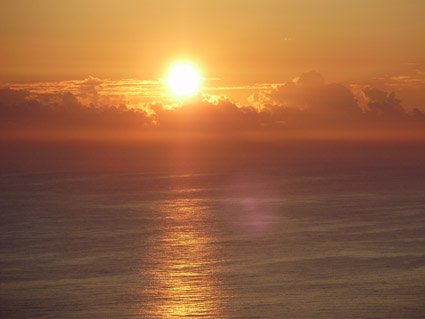 While we know little about archaic Germanic musical and magical practices, we can be pretty sure that they were into their singing and/or chanting.
While we know little about archaic Germanic musical and magical practices, we can be pretty sure that they were into their singing and/or chanting. the seidkona (loosely speaking, “seeress”) has a singer perform songs called Vardlokkur as part of helping her enter trance and have clairvoyant visions. And in the poem “Runatal Thattr Odinns” (part of “Havamal” in the Poetic Edda) we are told that Odin fell “screaming” or “roaring” from the tree once he won the runes.
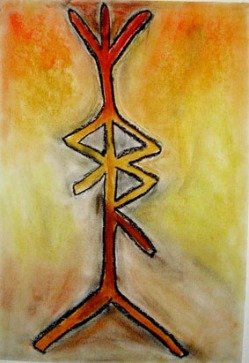 This first rune sigil is one of my “don’t remember what it means” specials. I used an Indian snake skin tambourine to send it off, dancing, singing, drumming, you name it, until I was frothing and spasming and seething madly. Odin appeared at various points and lectured me about various things I didn’t understanding – perhaps related somehow to the meaning of the bind rune.
This first rune sigil is one of my “don’t remember what it means” specials. I used an Indian snake skin tambourine to send it off, dancing, singing, drumming, you name it, until I was frothing and spasming and seething madly. Odin appeared at various points and lectured me about various things I didn’t understanding – perhaps related somehow to the meaning of the bind rune.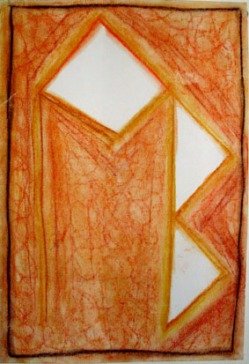 I’m no Sheehan but I have a few tricks up my sleeve. The magic kicked in really hard once I got my feet stamping in 4:4 time, then my left hand cutting across that on the tambourine in what I think was a 12:8, and then my right hand banging away on the tambourine for a while in 5:4, then 7:8 and 9:8. I used my forearms to loosely hold the tambourine across my chest as I did this so that the rhythms were very physical, tangible, for me.
I’m no Sheehan but I have a few tricks up my sleeve. The magic kicked in really hard once I got my feet stamping in 4:4 time, then my left hand cutting across that on the tambourine in what I think was a 12:8, and then my right hand banging away on the tambourine for a while in 5:4, then 7:8 and 9:8. I used my forearms to loosely hold the tambourine across my chest as I did this so that the rhythms were very physical, tangible, for me.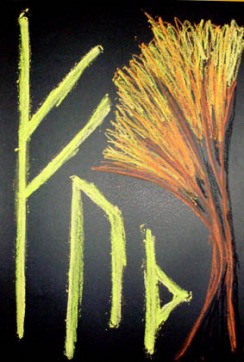 Well I’ve been firing off a few more sigils, so here they are. I worked out a whole stack of runic combinations for various purposes and am now working through designing them and activating them. As this post is pretty much a report on recent activities it should be classed as mostly UPG, albeit UPG informed by knowledge of historical sources.
Well I’ve been firing off a few more sigils, so here they are. I worked out a whole stack of runic combinations for various purposes and am now working through designing them and activating them. As this post is pretty much a report on recent activities it should be classed as mostly UPG, albeit UPG informed by knowledge of historical sources.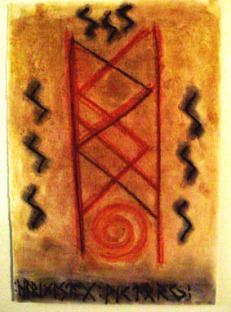 The magic to release this sigil into the world got a bit crazy.
The magic to release this sigil into the world got a bit crazy.